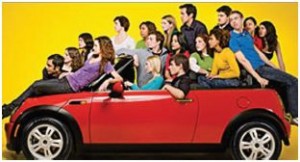You can quantify auto accident-related information any way you want to, and even include data showing that fatal roadway outcomes are trending downward in recent years.
But there’s still a flatly troubling baseline reality that any person with a glass-half-full perspective on roadway safety must deal with when it comes to traffic on America’s streets and highways.
And that is this, as noted in a recent media article discussing distracted driving and deadly automobile crashes: “[F]atal accidents, although declining, are the leading cause of death among Americans 5-24 and the second leading cause for everyone older.”
It is simply the case that American motorists’ long-term love affair with automobiles has been coupled with tragedy on a vast scale from the moment that passenger cars and trucks were first introduced. Reportedly, 32,675 people across the country died in vehicle-related crashes in 2014. On an “average” day of the year, that extrapolates to nearly 90 deaths.
Although that is of course 90 too many, a study entailing what is described as the “most recent, in-depth research” on accident causes suggests that materially reducing that number might be more akin to a utopian vision than a plausible reality.
And here’s why, essentially: Humans are, well, human. The aforementioned research shows that drivers are unsurprisingly prone to making mistakes, continuing to drive while tired, staying behind the wheel when emotional and often unduly entranced by distractions.
In fact, the recent research findings point to the presence of one or more such factors in about 90 percent of all crashes.
What is going to — what can ever — change that? Robotic cars will of course make a difference, but there’s clearly work remaining to be done on that front. Evolving safety-enhancing technologies like avoidance-collision systems and automatic braking are making a difference, even now.
The bottom line is that motorists will always bring some frailties to the driver’s seat. Smarter technologies, better roadway engineering, meaningful enforcement measures and consistent/ongoing educational efforts will have to be collectively employed to materially improve accident outcomes and curb the aforementioned dire crash-related numbers.


